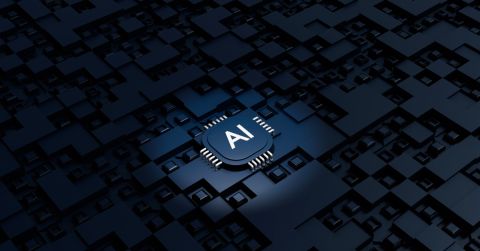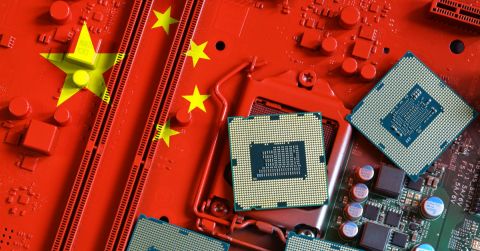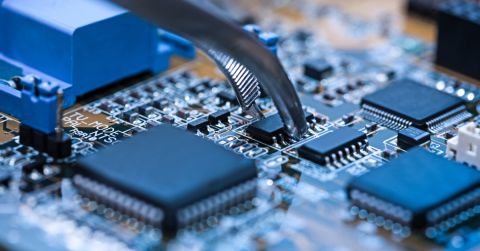6 Edge Computing Trends Shaping Hardware Decisions

Key Takeaways
- Edge systems deliver lower latency, reduce dependence on centralized infrastructure, and maintain local control by processing data closer to where it’s generated.
- Edge computing is fundamentally changing how designers, engineers, and procurement specialists approach hardware selection.
- Components for edge solutions need to sustain high performance in real-world environments with tight power budgets, unpredictable connectivity, and evolving workloads.
Staying Ahead of the Edge Curve
Edge computing is advancing quickly, and its success depends on how well designers interpret the signals of change. Power limits, AI acceleration, and new connectivity standards are rewriting the rules for system design. By understanding the trends driving this shift, engineers can anticipate constraints before they appear, build solutions that scale, and keep innovation close to where data originates. The trends that follow highlight the most influential factors shaping the next generation of edge solutions.
Local inferencing has shifted from a "nice-to-have" to a baseline capability for many edge applications. Integrated neural processing units (NPUs), vision processing units (VPUs), and GPUs are now standard in SoCs, so devices can run deep learning models on-site rather than sending raw data to the cloud. This brings obvious latency benefits while also allowing more autonomous operation in deployments where bandwidth is limited or privacy is sensitive. With these capabilities, a well-chosen AI accelerator can turn a compact edge device into a capable real-time decision-maker for vision inspection, voice control, predictive maintenance, and more.
Beyond raw performance, consider accelerators based on their ability to support diverse model architectures and frameworks. It’s also important to evaluate compatibility with AI toolchains, pre-optimized libraries, on-device model updates, vendor ecosystem maturity, and long-term availability. These details can be quickly cross-checked on Octopart – a free, comprehensive parts and solutions database with a powerful BOM Tool – when confirming lead times, lifecycle status, or drop-in alternatives.
Power efficiency and compute throughput have emerged as primary performance metrics. In remote, battery-powered, or thermally constrained deployments, maximizing performance per watt is just as important as peak performance. Evaluating devices by TOPS per watt shows whether components can handle continuous AI workloads without exceeding thermal design limits or requiring active cooling.
You can drive efficiency in architectural and software choices with in-memory computing to reduce data movement and chiplet packaging to mix process nodes for optimized performance and power. On the software side, quantization and pruning tailor models to the capabilities of edge hardware, reducing power draw without sacrificing accuracy. Early evaluation of these attributes prevents costly redesigns later, and component listings with real-world thermal and power data facilitate this assessment.
While consumer electronics can operate within narrow environmental tolerances, edge devices often face conditions that push their components to the limit. In manufacturing plants, temperatures can swing rapidly. In outdoor deployments, moisture, dust, and vibration are constant threats. Components specified for wide temperature ranges, ingress protection ratings, and resistance to shock and EMI are becoming essential for consistent performance in the field.
This trend of ruggedization extends beyond the obvious industrial and military markets. Retail, healthcare, and smart city deployments increasingly operate 24/7 in environments that lack climate control. For procurement specialists, evaluating component suppliers now means digging deeper into environmental certifications, reliability data, and accelerated life testing results. You can filter for these details in Octopart to verify that every part on your BOM is up for the job in every way.
Edge computing demands security at the silicon level. Hardware-based security features like Trusted Platform Modules (TPMs), secure boot sequences, and hardware encryption engines are becoming standard in edge-ready processors and SoMs. These measures protect against firmware tampering, unauthorized access, and data exfiltration, all of which are heightened risks when devices operate outside a controlled network perimeter.
Equally important is the ability to manage devices remotely. As edge deployments scale, sending technicians on-site for updates or troubleshooting becomes impractical. Secure remote provisioning, over-the-air firmware updates, and device health monitoring tools allow teams to maintain, patch, and optimize devices from anywhere. When shortlisting components, look for security and manageability features alongside performance specs. Both can be decisive factors in the long-term total cost of ownership.
The promise of edge computing hinges on the ability to move the right data at the right time, and that's where high-performance connectivity plays a crucial role. Integrated 5G radios, Time-Sensitive Networking (TSN) support, and multi-gigabit Ethernet interfaces are increasingly built into edge hardware. These technologies deliver low-latency coordination between devices, whether it’s for multi-camera AI analysis, collaborative robotics, or real-time industrial control.
Designers and procurement specialists should also factor in the need for redundancy and failover. In critical applications, connectivity can’t be a single point of failure. Look for edge devices with multiple interface options, both wired and wireless, that can adapt dynamically to network conditions. By including connectivity in your component sourcing criteria, you can create a solution that looks good on paper and performs well in real-world conditions.
Edge computing workloads vary widely, from simple sensor fusion to complex multimodal AI. Modular architectures provide tailored performance and features without requiring the redesign of entire systems. System-on-Modules (SoMs) and modular accelerators are leading this trend, offering a base platform that can be scaled up or down depending on the application. This approach speeds development and simplifies sourcing and inventory management.
Chiplet-based designs are adding another layer of flexibility. By combining different processing units like CPUs, GPUs, and NPUs on separate dies, designers can mix and match capabilities while benefiting from improved yields and cost efficiency. For procurement teams, modularity offers extended product lifecycles with mid-generation upgrades. This preserves existing certifications and reduces the cost of adapting to new market demands. In Octopart, you can quickly compare module families to find configurations that fit both your performance targets and long-term sourcing strategy.
For a deep dive into today’s state-of-the-art edge hardware, see 10 Leading Components for Edge Computing.
Building Edge Computing Systems That Last
Each of these trends strengthens the others. AI acceleration gains are more impactful when paired with efficient power use, robust environmental performance, and secure, high-bandwidth connectivity. Modularity makes it easier to integrate these capabilities without having to start from scratch. In combination, they represent a shift toward edge devices that are more capable, adaptable, reliable, and secure.
For engineers and procurement specialists, component selection for edge computing requires a broader perspective than ever before. Success depends on balancing performance, efficiency, resilience, and scalability in a way that matches both the technical requirements of the workload and the operational realities of deployment. Using a sourcing platform like Octopart enables you to evaluate these factors side by side and streamline your BOM review, so every part you choose is ready for the edge.









